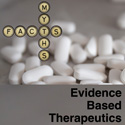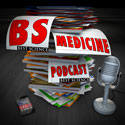Episode 102: Blood pressure targets: Bullseye or Bulls–t
In episode 102, Mike and James, with laser precision, look at the evidence around blood pressure targets. We cover data in non-diabetics, diabetics, chronic kidney disease and the elderly. At the end they agree that the BP target we used 30 years ago (140/90) is still pretty good. To prove the point James gives Mike some sublingual nifedipine and Mike demonstrates the J-curve by falling on the floor and ‘pretending’ to be unable to get up (faker!).
Show notes
1) Systematic review of intensive BP treatment
2) ACCORD blood pressure study
N Engl J Med 2010;362:1575-8
3) CARDIO-Sis
Lancet 2009;374:525–33
4) AASK – chronic kidney disease
N Engl J Med 2010;363:918-29
5) INVEST – retrospective data
JAMA 2010;304:61-68
6) BP guidelines
US
Curr Hypertens Rep 2010; 12:290–295
The Seventh Report of the Joint National Committee on: Prevention, Detection, Evaluation, and Treatment of High Blood Pressure. August 2004
Canadian
2009 Canadian Hypertension Education Program Recommendations: The Scientific Summary
European
J Hypertension 2009, 27:2121–2158
7) BP in the elderly
N Engl J Med 2008;358:1887-98
Hypertens Res 2008;31:1595-601
Hypertension 2010;56:196-202



